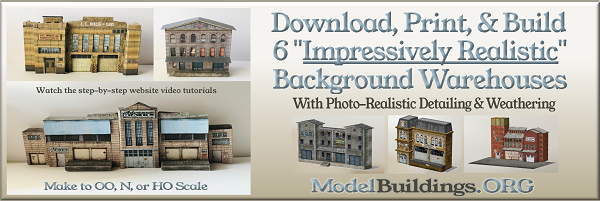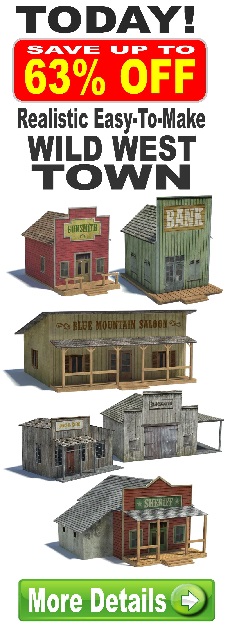Everything on model trains, model railroads, model railways, locomotives, model train layouts, scenery, wiring, DCC and more. Enjoy the world's best hobby... model railroading!
How To Maintain Smooth Running Track
Hedley asks readers:
 “What’s the best way to keep my track in top condition so my HO trains run smoother? I have used a fine sand paper, but a railroading buddy said rubbing alcohol is better. I’m confused – should I use sandpaper, or rubbing alcohol, both, or something else?
“What’s the best way to keep my track in top condition so my HO trains run smoother? I have used a fine sand paper, but a railroading buddy said rubbing alcohol is better. I’m confused – should I use sandpaper, or rubbing alcohol, both, or something else?
7 Responses to How To Maintain Smooth Running Track
Leave a Reply
















I would not suggest using any type of abrasive. Tracks have a very fine coating from the manufacturer(plating) which could be a tin coating or other metal which helps to keep the corrosion down. Alcohol is a good product, use a few drops on a piece of cloth regularly and that will do the job. There are also cleaning kits that use felt as cleaning pads.
I use block erasers to clean my rails rather than cleaning stones. I also use a cleaning wheel in a caboose to pull around and using a track cleaning fluid. The cleaning wheel is wrapped with a strip of cleaning wipes ( they use to call them Handy wipes years ago and you can get them in the plumbing department of Menards stores under another name for cents on the dollar) and use that around the layout routinely. Caution though that some cleaning fluids are not good on plastic wheels. Actually I have been using a very light dampness of WD 40 that has done well and it does help with the electrical contact but routine cleaning still needs to happen as it does collect dirt as well.
from Newman
Many years ago, regular track was steel, tin-plated to prevent rust.
Unfortunately, track rubbers were invented, which removed the tin plating, so it all went rusty.
Modern nickel-silver track will not suffer corrosion problems indoors.
To clean the rail tops: paper towel is perfectly adequate under all normal circumstances.
Only if there is grease or oil on the track, wet it with alcohol, meths or lighter fluid (warning: no smoking !).
(Such solvents may be sold at ridiculous prices as Track Cleaning Fluid.)
Personally, I totally disagree with track rubbers, they just leave bits of grit and rubber on the track, causing further problems.
Oil is an electrical insulator ! It will hold dust and dirt on the rails, which will be picked up and cause the wheels to become dirty.
Track cleaner cars are fun if you like gadgets, but really only useful if you have tunnels or a large layout with sections that are difficult to reach.
Try rubbing the track with a dollar bill. It will work wonders!
I have gone from using all sorts of different types of rail cleaners/cars to using the Aztec Manufacturing rail cleaning car. Since I travel to the area periodically I checked on the shop where they are hand assembled before purchasing one and I am so pleased with its performance I got rid of all of my other forms of maintaining track except for two Woodland Scenics products I use for maintaining locomotive wheels and newly laid track, and in yards/spurs where I don’t get much traffic. They designed for me cars in the railroad I model, so I just run one in each train running along the mainlines and branch lines. I enjoy the saved time to apply to running the trains instead of maintaining them now 🙂
I was told of a rather outrageous way to keep tracks clean and conducting recently; tried it and it worked a treat! Use brake fluid – yes, brake fluid – and a cotton bud. Spread a little on the tracks and let one of your locomotives run over it, and spread it all over the track. It only needs doing once a month, and the track conduction is perfect! I know, weird, but believe it or not it works! A one liter bottle of fluid should last you a lifetime!
Watch out for brake fluid if you have plastic sleepered track – not recommended for two reasons.
1. Brake fluid can destroy plastic sleepers
2. Brake fluid will remove paint
If you must just be careful.
With my N and HO layouts using nickel silver track I found that once down and ballasted if I go over the whole track with a track rubber initially, and follow up occasionally with Wahl clipper oil (available from your local men’s hairdresser of barber) I have very little trouble with dirty track or poor running. Be very mean with the oil!!!
Every length of track has electrical connection, no matter how short it is. I use phone hookup wire for droppers and strip house wiring of insulation for “bus wires”. The bus wires run under the layout base boards, following the track and their heavier gauge assists the electrons to move through the system. This ensures full voltage across the system and improves pickup by the locomotives. I also “lubricate” the bearings on the locomotives with powdered graphite (available from your local hardware store, used for lubricating door locks). It is non greasy and non staining, but it has been identified as a carcigen so avoid getting on your fingers. In the quantities used it should not be an issue though.